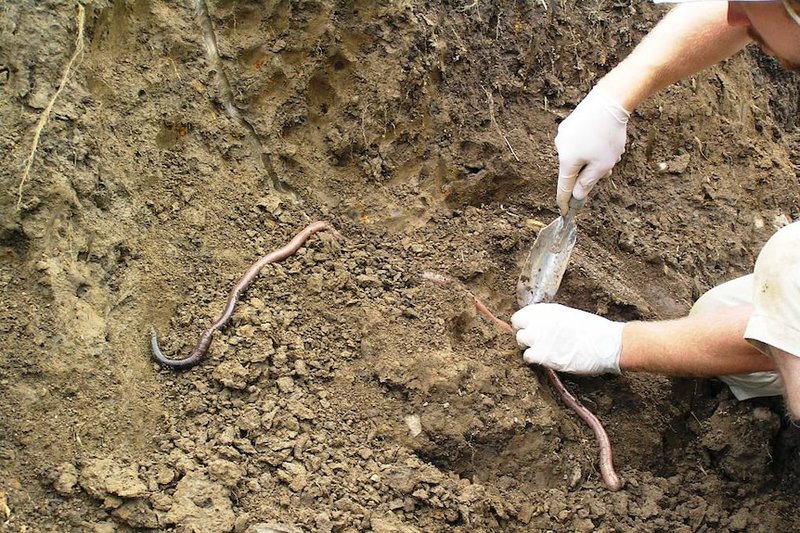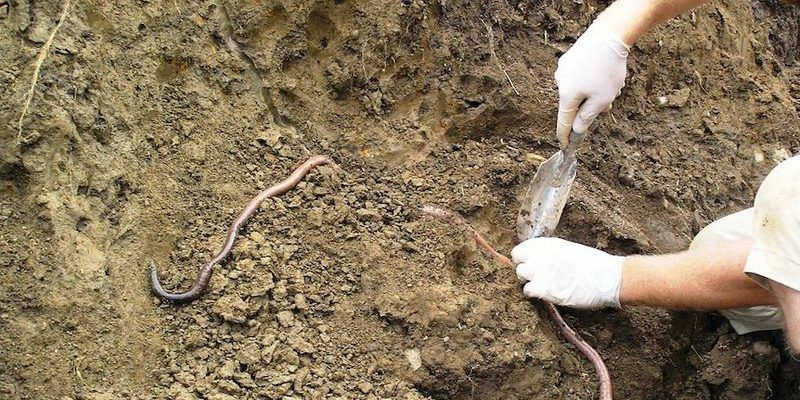
Imagine being in a dense, lush forest or a damp, grassy patch—these are the perfect homes for various worm species. Just like how different types of books can be found in a library, different worms inhabit various niches in their environment. Let’s dive into the world of the Giant Gippsland Earthworm and see how it compares to other worms that share its habitat. Trust me, you might be surprised at what you learn!
What is the Giant Gippsland Earthworm?
The Giant Gippsland Earthworm, or *Megascolides australis*, is a remarkable creature. It can grow up to three meters long, making it one of the largest earthworms in the world. When you see one, it’s hard to believe that this squiggly, slimy being is just a worm! Found mainly in the *Gippsland* region of Victoria, these earthworms thrive in rich, moist soil. They play an essential role in aerating and enriching the ground, making the ecosystem healthier.
What’s particularly interesting about the Giant Gippsland Earthworm is its unique ability to produce a mucus layer on its body. This helps it stay moist in its underground habitat, which is vital for its survival. Without that moisture, these worms can dry out quickly, just like how you need water on a hot day to feel refreshed.
Key Characteristics of the Giant Gippsland Earthworm
You might be wondering what sets the Giant Gippsland Earthworm apart from other worms in its habitat, like the common earthworm (*Lumbricus terrestris*). For starters, the Giant Gippsland Earthworm has a distinct appearance. Its size and unique coloration—often a bluish or greyish hue—are pretty impressive. In contrast, common earthworms tend to be smaller and have a more uniform brown color.
Additionally, the Giant Gippsland Earthworm has a segmented body that helps it move through the soil efficiently. Each segment can expand and contract, pulling the worm through its underground tunnels. It’s like how a concertina or an accordion works—each fold moves independently while contributing to the overall motion. This efficient movement allows it to dig deep into the ground as it searches for food and oxygen.
Habitat and Diet of the Giant Gippsland Earthworm
The Giant Gippsland Earthworm is picky about where it lives. It prefers moist, grassy areas with rich organic material. This is why the Gippsland region is perfect for them, providing the right conditions for a cozy underground life. Imagine a worm turning over soil to feast on decaying leaves, roots, and organic matter. That’s a regular day for the Giant Gippsland Earthworm!
In contrast, other species, like the *Aporrectodea caliginosa* (the grey worm), can adapt to a wider range of environments, including drier areas. While the Giant Gippsland Earthworm munches on decomposing matter, these grey worms may also consume bacteria and fungi that thrive in various soils. Think of it like two friends at a buffet—one prefers salads, while the other is all about desserts! They both eat differently, but they’re enjoying their meal just the same.
Similar Worm Species in the Gippsland Habitat
In the same habitat as the Giant Gippsland Earthworm, you can find several other worm species. One notable mention is the Common Earthworm (*Lumbricus terrestris*). Common earthworms are usually smaller, measuring about 10 to 30 centimeters in length. They also have a broader distribution and can thrive in gardens and agricultural fields. While they share the role of enriching soil, their preferences differ, often leading them to spend time in the upper layers of soil, unlike their giant counterpart.
Another similar species is the Red Wiggler Worm (*Eisenia fetida*). This worm is much smaller and is a popular choice for composting. Red wigglers excel at breaking down organic waste, turning food scraps into nutrient-rich compost. While the Giant Gippsland Earthworm plays a role in its specific habitat, the red wiggler is more of a composting hero, helping gardeners reduce waste while improving their soil.
Conservation Status of the Giant Gippsland Earthworm
Unfortunately, the Giant Gippsland Earthworm faces threats that put its existence at risk. Habitat destruction due to farming and urban development has significantly reduced its population. Their limited range means they are vulnerable to changes in their environment. Think about it: if your favorite coffee shop suddenly closed down, you’d have to find a new place to hang out, right? For these earthworms, losing their habitat can mean losing their home for good, making conservation efforts essential.
Conservation groups are working hard to protect their habitats and educate the public about the importance of these remarkable worms. By restoring natural environments and minimizing pollution, we can help ensure that the Giant Gippsland Earthworm continues to thrive. It’s like giving a friend a helping hand when they’re in need; every little bit counts!
Why Understanding Worm Species Matters
So, why should you care about the Giant Gippsland Earthworm and its relatives? Well, it all ties back to the health of our ecosystems. Worms like these are crucial for soil aeration, which enhances plant growth. They act as nature’s engineers, breaking down organic material, recycling nutrients, and improving soil structure.
Each time you see a worm in your yard, remember that it’s not just a squiggly creature. It plays a vital role in maintaining the delicate balance of life in its environment. Understanding these connections can help us appreciate nature more and push for conservation efforts that protect not just the Giant Gippsland Earthworm but all living creatures that share this planet with us.
Final Thoughts
The Giant Gippsland Earthworm is a marvel of nature, showcasing how different worm species adapt and thrive in specific environments. By exploring its unique characteristics, habitat preferences, and conservation status, we gain valuable insights into the intricate relationships within ecosystems. Each worm, from the Giant Gippsland to the common and red wigglers, has its own role to play, reminding us of the complexity and beauty of life beneath our feet.
In the end, respecting and understanding these tiny creatures can lead us to a deeper appreciation for the natural world. So next time you spot a worm in your garden or on a nature walk, take a moment to consider its significance. It’s not just a worm; it’s a vital part of the ecosystem’s story.

